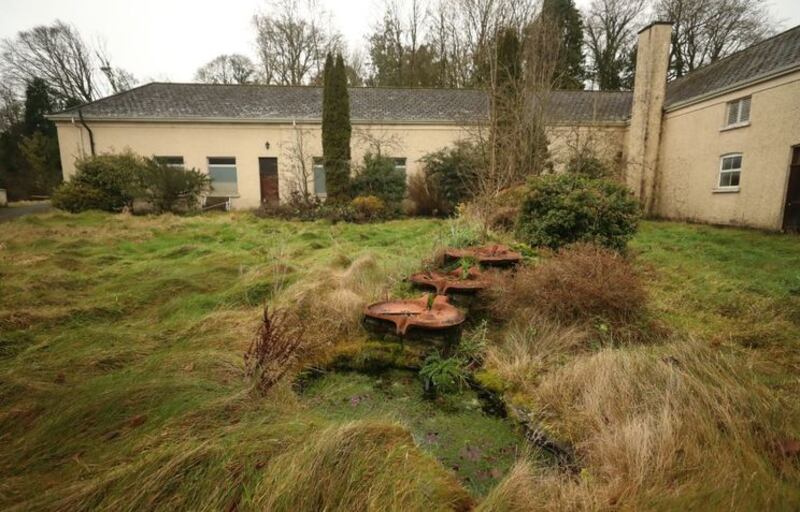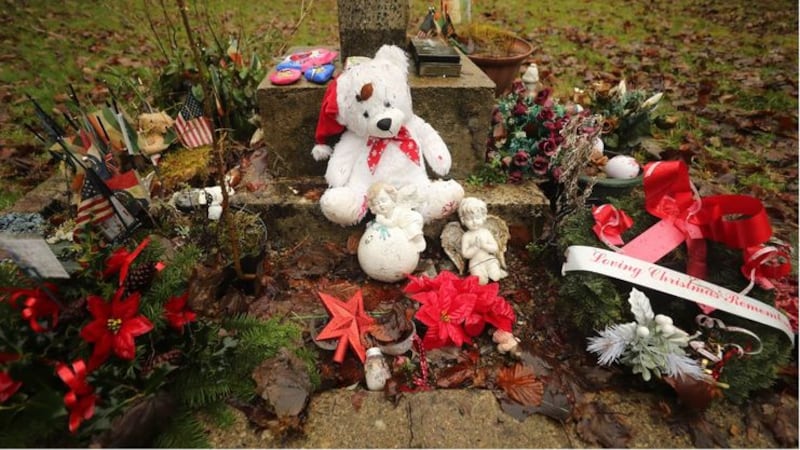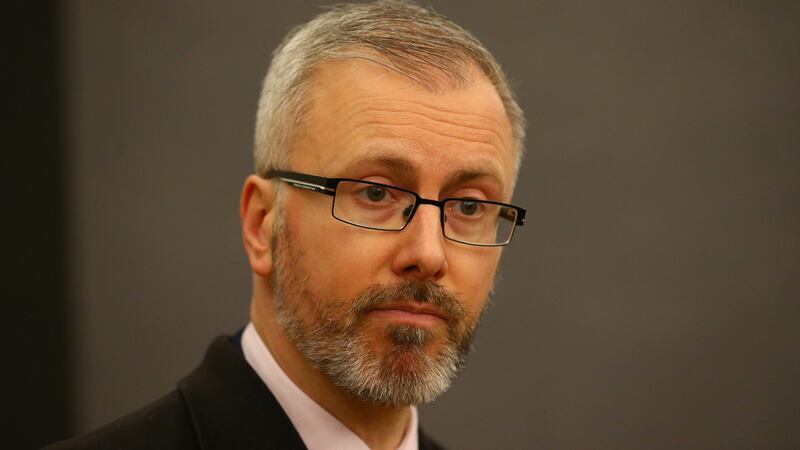The Mother and Baby Homes report has exposed “a stifling, oppressive and brutally misogynistic culture” in the Republic, the Children’s Minister has said.
The long-awaited report from the Commission of Investigation has been laid bare more than five years after it was set up, and following several delays.
Survivors of the mother and baby homes will read about the shocking number of children and babies who died in the institutions.
It is understood that up to 9,000 children died in 18 institutions between 1922 and the closure of the last such home in 1998.
Minister Roderic O’Gorman said it marked “a landmark moment for the Irish state".
He said: “The Commission’s investigation reveals the truth of what happened, within the walls of Mother and Baby Homes and beyond them, to many thousands of women and children.
“Importantly, it also inscribes for posterity, those journeys, those heartbreaks, those truths in the words of those who experienced them first-hand.
“The report makes clear that for decades, Ireland had a stifling, oppressive and brutally misogynistic culture, where a pervasive stigmatisation of unmarried mothers and their children robbed those individuals of their agency and sometimes their future.”
The mother and baby homes report has found that responsibility for the harsh treatment of unmarried mothers in the Republic lies mainly with “their own immediate families”.
It states: “Women who gave birth outside marriage were subject to particularly harsh treatment.
“Responsibility for that harsh treatment rests mainly with the fathers of their children and their own immediate families.
“It was supported by, contributed to, and condoned by, the institutions of the State and the churches.
“However, it must be acknowledged that the institutions under investigation provided a refuge – a harsh refuge in some cases – when the families provided no refuge at all.”
The mother and baby homes report found no evidence that women were forced to enter the homes by the Church or State.
It said: “Most women had no alternative. Many pregnant single women contacted the Department of Local Government and Public Health (DLGPH), later the Department of Health, their local health authority, or a Catholic charity seeking assistance because they had nowhere to go and no money.
“Women were brought to mother and baby homes by their parents or other family members without being consulted as to their destination.”
Read more: More than one in 10 children admitted to mother and baby homes died, report finds
The commission said women who worked outside the institutions without pay, women in the Tuam home in Co Galway who had to care for other mothers’ children and those who looked after other residents in county homes should be compensated.
It added that women who spent lengthy periods (for example, in excess of six months) in mother and baby homes before 1974 should also be considered for redress.
It said: “There is no doubt that women in mother and baby homes were subjected to emotional abuse but there is very little evidence of physical abuse and no evidence of sexual abuse.”
The commission said the Dublin government could consider earmarking a specific fund for current disadvantaged children and naming it in honour of, say, the children who died in Tuam.
A total of around 9,000 children died in mother and baby homes, around 15% of all those who entered the institutions, the report found.
In the years 1945-46, the death rate among infants in mother and baby homes was almost twice that of the national average for “illegitimate” children.
The report said: “In the years before 1960 mother and baby homes did not save the lives of ‘illegitimate’ children; in fact, they appear to have significantly reduced their prospects of survival.
“The very high mortality rates were known to local and national authorities at the time and were recorded in official publications.”
There were about 56,000 unmarried mothers and about 57,000 children in the mother and baby homes and county homes investigated by the commission.
The greatest number of admissions was in the 1960s and early 1970s.
It is likely that there were a further 25,000 unmarried mothers and a larger number of children in the county homes which were not investigated; admissions to county homes were largely pre-1960.
The commission said: “While mother and baby homes were not a peculiarly Irish phenomenon, the proportion of Irish unmarried mothers who were admitted to mother and baby homes or county homes in the 20th century was probably the highest in the world.”
Some pregnancies were the result of rape; some women had mental health problems, some had an intellectual disability.
The commission said: “The only difference between the women in mother and baby homes and their sisters, class-mates and work companions was that they became pregnant while unmarried.
“Their lives were blighted by pregnancy outside marriage, and the responses of the father of their child, their immediate families and the wider community.”
The commission said women were admitted to mother and baby homes and county homes because they failed to secure the support of their family and the father of their child.
“They were forced to leave home, and seek a place where they could stay without having to pay.
“Many were destitute. Women who feared the consequences of their pregnancy becoming known to their family and neighbours entered mother and baby homes to protect their privacy.
“Some travelled to Britain, for the same reason.”
The report found little evidence that politicians or the public were concerned about children in the homes, despite the “appalling level of infant mortality”.
It said: “No publicity was given to the fact that in some years during the 1930s and 1940s, over 40% of ‘illegitimate’ children were dying before their first birthday in mother and baby homes.
“The high level of infant mortality in the Tuam Children’s Home did not feature at meetings of Galway County Council, though Tuam was under the control of the local authority and it held meetings in the Children’s Home.
“The Bethany management board could describe health in the home as ‘excellent’, despite the minutes of the same meeting recording the deaths of a number of children.”
It adds: “The children of Irish unmarried mothers were hidden from the public gaze.
“Infant mortality in general remained high in Ireland until the late 1940s, especially in the inner cities, yet there was no national outcry about this, except among a small number of medical professionals.”
Read more: More than one in 10 children admitted to mother and baby homes died, report finds
Taoiseach Micheál Martin said the report describes “a dark, difficult and shameful chapter of very recent Irish history”.
“It holds up a mirror to aspects of our past, which are painful and difficult, and from the present-day perspective, often hard to comprehend,” he said.
He added: “While this report will obviously have the most direct impact on survivors and their families, it presents all of Irish society with profound questions.
“What has been described in this report wasn’t imposed on us by any foreign power. We did this to ourselves, as a society.
“We treated women badly, we treated children especially badly. We had a completely warped attitude to sexuality and intimacy. Young mothers and their sons and daughters paid a terrible price for that dysfunction.”
The taoiseach said he will issue a full State apology on Wednesday in the Dáil.
Mr Martin said the most distressing aspect of the report is the "exceptionally high rate of infant mortality".
He added: "It's production is a testament to the bravery of survivors and their advocates and their dedication to ensuring that as a nation, we must face up to the full truth of our past."
He paid tribute to Catherine Corless, the historian who exposed the terrible scandal of the Tuam mother and baby home.
He said: "I particularly want to acknowledge the critical role played by Catherine Corless, a tireless crusader for dignity and truth, whose work at the mother and baby homes site led to the establishment of this commission."
The report made 53 recommendations.
They surrounded issues including compensation and memorialisation.
The commission defended the Child and Family Agency (Tusla) and its approach to providing information to adopted people.
“This criticism is unfair and misplaced,” it said.
“Tusla is implementing the law and has no choice about doing so.
“The problem is not with Tusla; it is with the law.
“Any other agency providing information and tracing services would be in the same position.”
Unrestricted access to birth information for adopted people is one issue considered by the commission.
It said: “Adopted people should have a right to their birth certificates and associated birth information.
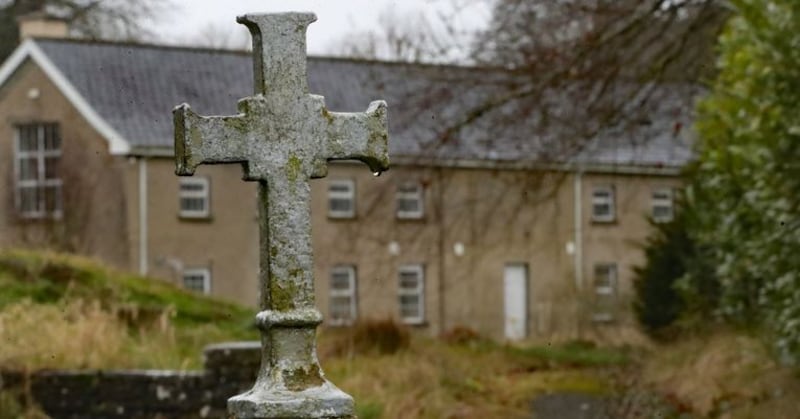
“A person’s right to his or her identity is an important human right and should only be denied in very exceptional circumstances.
“Medical information and adoption records compiled at the time of the adoption should also be available.
“A mechanism could be put in place to allow a birth mother to argue that her privacy rights are being eroded.”
Minster O’Gorman said the publication brought an end to decades of silence around the true horror of Ireland’s Mother and Baby Homes.
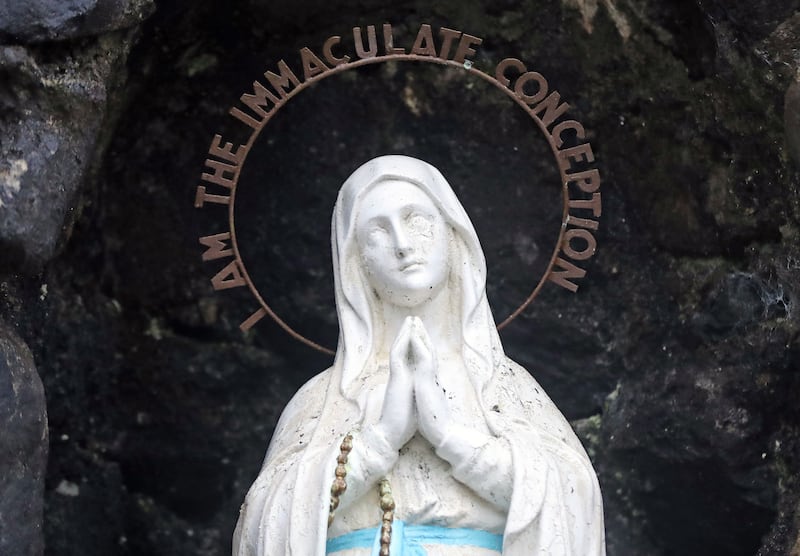
He said: “Publication of the Commission’s report is an expression of truth. For decades, Irish society was defined by its silence, and, in that, its complicity in what was done to some of our most vulnerable citizens.
“With its publication, we are affirming that their stories and their truth, will be heard, acknowledged and understood.”
The Dublin government is to consider the report in the “weeks and months ahead”, it said in a statement.
It will aim to develop an action plan centred on eight specific issues: A survivor-centred approach, an apology, access to personal information, archiving and databases, memorialisation, restorative recognition and dignified burial.
The government has established a counselling support service for survivors, who were given access to it for the first time earlier on Tuesday.
The HSE National Counselling Service (NCS) is available to provide a counselling service for survivors from Monday to Friday between 9.30am and 5pm.
The government has committed to providing compensation to some survivors.
A bespoke ex-gratia “Restorative Recognition Scheme” has been established to provide financial recognition to specific groups identified by the Commission of Investigation.
The government has reaffirmed its commitment that people can access personal information contained within the Commission’s records in line with GDPR.
A national memorial and records centre related to institutional trauma during the 20th century will also be developed.
It will serve as a centralised repository for institutional records, and envisages archiving and presenting relevant records and witness testimony by victims and survivors as well as the historical and social context.
